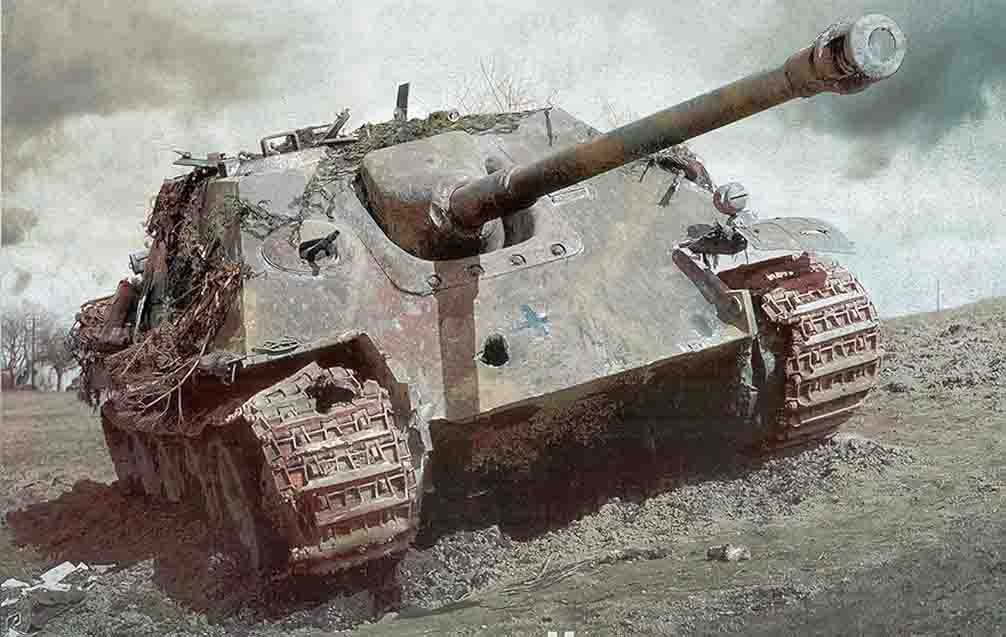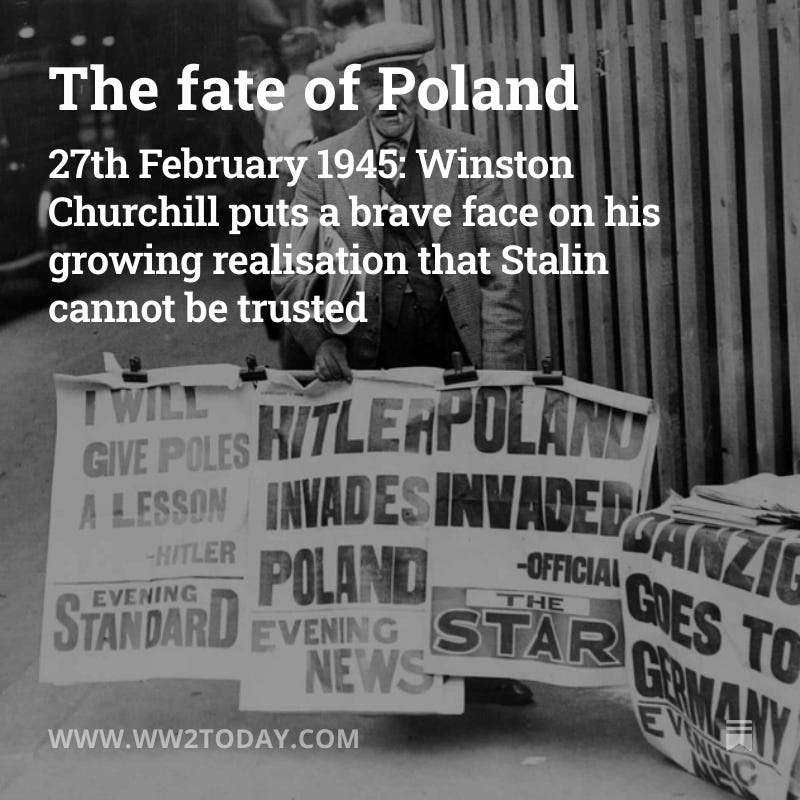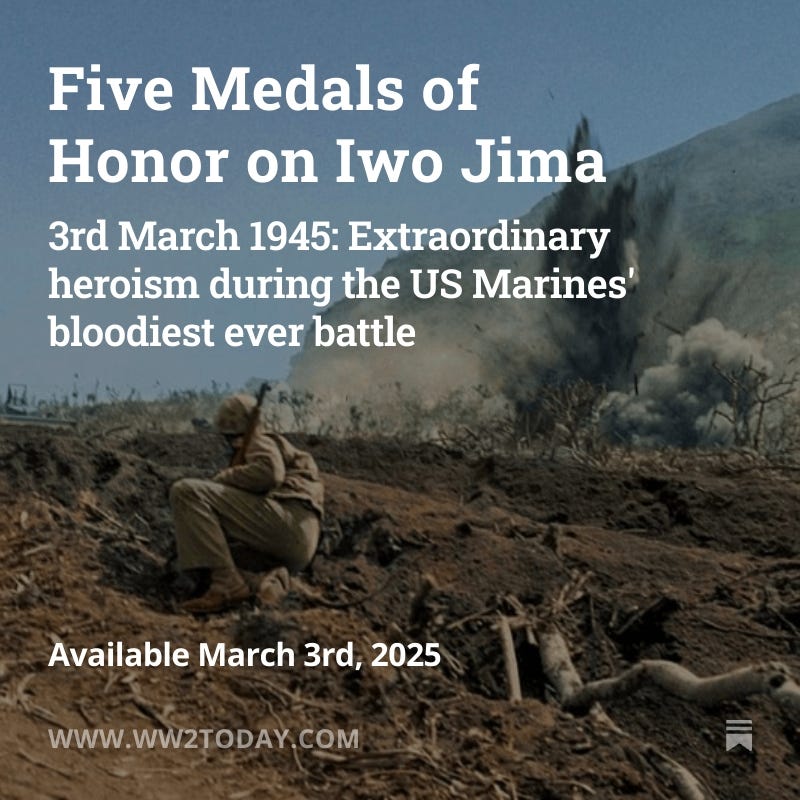Panzers on the Vistula
An account of the Wehrmachts' desperate last battles on the Eastern Front in early 1945
In early 1945, the Red Army launched the Vistula-Oder offensive. Outnumbering the Wehrmacht at least three to one, it would thrust rapidly through Poland and into Germany. At the time, the Vistula River lay in East Prussia, which had been German territory for many years. The Germans were now fighting on what they recognised as their homeland. Hundreds of thousands of ethnic German evacuees now fled west.
Hans Schäufler was an officer with Panzer Regiment 35. Panzers on the Vistula: Retreat and Rout in East Prussia 1945 is his memoir of the desperate battles fought to slow the Soviet advance, including many personal accounts from fellow members of his regiment. First, they had to reequip with Jagdpathers - tank destroyers rather than tanks - then they fought as infantry, then they endured terrible struggles to evade Soviet captivity.
The following episode is recounted by Sergeant Major Hermann Bix of Panzer Regiment 35:
We were extremely angry when we had to take over Jagdpathers instead of our usual Panzer Vs, which, in the general chaos, had failed to reach the self-propelled artillery battalion as expected.Then we were forced to examine the equipment a bit closer.
The tanks had no swivelling turret. One had to aim with the whole tank and one sat a little too much out in the open but, on the other hand, the steel monster disposed of a first class 88mm gun with enormous penetrating power, a fabulous range and great accuracy. So we quickly forgot the unusualness of the Jagdpather and made ourselves familiar with its advantages. We soon had the opportunity of exploiting them to the full.
It was the end of February 1945. I was located south of Preussisch Stargard with three of these Jagdpanzers, covering the withdrawal of the grenadiers and the construction of a new defensive front further back. Everything was going back, only the dark humps of earth retaining a light covering of snow indicating the abandoned German positions. I stood with my Jagdpanther in a little village behind a large dung heap in such a position that I could just see over it with my eyes, as could the gun.
The flat turret of our tank only protruded a tiny bit over the cover. Behind me stood Sergeant-Major Dehm with yet another Jagdpather, both of us having hardly any ammunition. Without shells he was only a nuisance to me. I signalled to him to move back a bit.
As the fog slowly lifted, two Soviet tanks appeared quite cautiously on a hill in front of us and felt their way slowly forward. When they came to within 1,200 metres I could see that they were neither T-34s nor KW-1s, but American tanks. From experience I knew that at this range they were comparatively easy to hit. We shot both on fire and for a while no other Ivan stuck his nose out.
A group of tank men were guarding the village, crews that had lost their tanks, so I was secure from surprises from right and left. One had a very limited view from the tank and anyway one cannot have one’s eyes everywhere.
About half an hour after the shooting up of the two tanks I heard tank noises 1,000 metres further to the right and soon picked out two Soviet tanks trying to go round the village. My 88mm gun fired so accurately at this distance that there were no near misses. Soon both tanks were burning.
It was obvious to me that the Soviets were seeking a weak point at which to break through. It was important to be alert along the whole front, as I was alone and out on a limb. The two other Jagdpathers had pulled back with my consent as they had shot themselves out. My gun-aimer reported a stock of 5 explosive and 20 armour-piercing shells.
Second-Lieutenant Tautorus, my company commander, was somewhere around with his Panthers, I reported my position and lack of ammunition to him by radio, and received the order to hold back the Soviets as long as possible, as the infantry had not finished digging in.
Meanwhile the visibility had reduced to the extent that I was unable to observe everything happening to my right and left. The Soviets could have arrived marching in step and column of threes without having been noticed.
I observed the slope opposite closely and realised that the Soviets had openly brought two anti-tank guns into position. I loaded with explosive, gave my firing order and saw bits of wood and material flying in the air. Those lads had caught us out this way, had put a dummy into position and had locked onto our fire. Not stupid! And we fools had fallen for it! I was not going to fall for it a second time. I regretted my valuable shell.
I kept dead still, having my tank roll back a little so that we could not in any way be seen from the front. Only when I stuck my head out of the turret could I see straight over the cover. I could hardly believe my eyes. I saw a long column of tanks coming straight towards me, the leading one about 1,200 metres away, with supply trucks close behind the tanks.
I had previously divided the terrain in front of me into set points and carefully established the ranges, so I could reckon on hitting the leading tank with an armour-piercing shell when it reached the 800 metre mark.
I do not know why, but my superb gun aimer did not hit the tank with his first round, but a vast tree on the road edge. The trunk broke apart and the crown with its thick branches fell on the leading tank, which slipped, having suddenly lost its vision, and fell head over heels into the deep roadside ditch and lay motionless.
The following tanks closed up tight and stopped, not having identified me. They all turned their turrets to the right and fired like a fire brigade at the dark heaps of earth of the abandoned infantry position.
I had an almighty shock. A Soviet tank was standing 300 metres right of us in the village.
Then we joined in, and it was an easy game as I had the broadsides of their turrets right in my line of fire. But we had to aim carefully, as we had so few shells. Even if an enemy tank survived after we had fired at it, things could turn nasty for us. So I fired first at a tank in the middle of the column, which burst into flames with the first shot. Next came the tank at the rear, which also burst into flames. Then we fired effortlessly at the row, one after another, as they stood there like targets on the range. Within ten minutes we had shot up eleven Soviet tanks in the column. The rest drove off in panic, trying to turn and getting stuck in the ditch, where they were wrapped in the flames and smoke from the long row of burning tanks.
I gave the order to fire at the trucks, but the gun aimer reported only two shells left. The machine gun ammunition had also run out. Now it was high time to disappear from the scene, for without ammunition even the best tank was useless.
We reversed slowly for the ground was weak with hardly any grip. Turning here was impossible. We could only move quite carefully backwards, metre by metre, withdrawing from sight of the column, which was now slowly coming to life.
The heavy engine of our tank howled loudly under the strain. We were only a few metres from solid ground, but the tracks churned away if the driver gave only a little more gas. Then I had an almighty shock. A Soviet tank was standing 300 metres right of us in the village. It had wound its way through unnoticed by us, wormed its way between the houses and apparently suspected no German tanks.
However, as it only could happen, he spotted us and I had to watch idly as he slowly turned his turret toward us. Unfortunately we could not do the same because of our fixed turret. But then the Soviet tank remained still. I realised that without doubt that this was an unique opportunity to shoot. I screamed, no roared: ‘Back and turn left! Stop! Turn right here!’
But our toboggan was standing in mud and moved only slowly, much too slowly. This made me nervous and my disquiet transferred itself to the crew. The gun-loader, who was the first to sense the danger, reminded me: ‘Only two armour piercing shells! ’ My heart began to thump. It was something wonderful for me. We simply could not get into a firing position. Only the driver knew exactly what was up, as he had my order to get the tank into a firing position when he could.
I did not want to, but I had to realise that we would be to do it, as the steel colossus would only move a centimetre at a time in this mud bath, and the gun on the Soviet tank was pointing directly at us. Was I seeing right? Or was it a ghost? It was standing a bit too high!
Then a jolt went through my body. I was suddenly fully conscious again. I followed every movement by the Russian exactly, not missing the slightest detail. And then my opponent made a decisive error. The driver, believing he had time, wanted to bring his tank forward as its rear was too low, but it was sinking deeper and deeper as the ground there was also a morass.
Only seconds earlier I had been ready to give up: ‘Hermann, make your peace with Heaven quickly. It will soon be all over! ’ But now I saw a chance for us. ‘Keep calm!’ I told myself. Our tank turned slowly until we were in a firing position. The gun was clear and at the right height. The gun-aimer carefully took aim. Our opponent was sinking ever deeper by the stern and I saw how he was trying in vain to lower his gun.
Suddenly the turret hatch flew open and two hands stretched out and waved. Did the crew want to surrender? Or did they want to fool us. We were used to this sort of thing. No, I could take no risks. We fired our penultimate shell into the projecting side to cover every eventuality. The crew jumped out - one, two, three, four men - all in order.
Then the last shell thundered into the Soviet tank and it immediately burst into flames, the sixteenth that morning. But now we had to go. A tank without ammunition in the sixth year of the war was worthless.
Yes, one needs luck in war, and eyes in one’s head, and a Jagdpanzer, and a crew like this!
© Hans Schäufler 1991 © English Translation Pen & Sword Books Ltd 2018 and 2021, 'Panzers on the Vistula: Retreat and Rout in East Prussia 1945. Reproduced courtesy of Pen & Sword Publishers Ltd.






